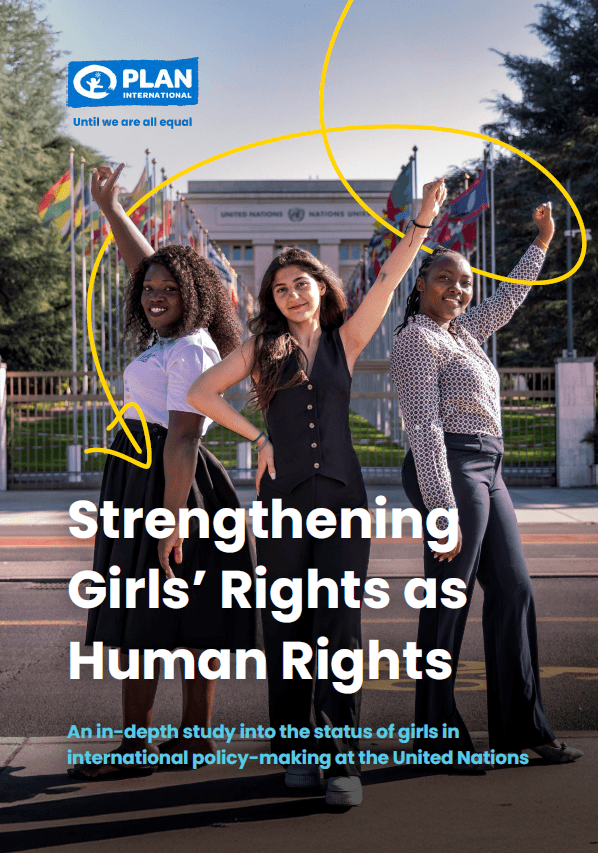Strengthening girls’ rights as human rights
An in-depth study into the status of girls in international policy-making at the United Nations.

This 2024 report examines the status of girls in international policy-making, building on Plan International’s groundbreaking 2018 Girls’ Rights Are Human Rights report.
The latest research explores changes from 2018 to 2023, analysing 3,664 international policy documents to shed light on progress, gaps, and opportunities related to girls’ rights and their protection within key human rights frameworks.
While there have been hard-won advancements in visibility and inclusion, significant challenges persist. Despite efforts to protect girls’ rights in specific and often sensitive areas – such as education, sexual and reproductive health, and the prevention of violence – there is limited progress in other critical domains, including freedom from torture, protection against disappearances, access to water, food, housing, land, and inheritance rights.
This report highlights how gender-neutral and age-neutral approaches often render girls invisible and calls for a more nuanced and intersectional understanding of their diverse realities.
Other languages and versions available below.
Key findings
Steps forward:
- Increased reference to girls in titles, mandates and agendas
- Increased prioritisation of girls’ rights within the human rights institutions and their hierarchy
- Increased participation of girls in work programmes and events
- Increased systematic inclusion of language on girls
- Increased recognition of girls’ intersecting identities
- Increased focus on including and addressing girls’ rights in the substance of work
- Increased focus on girls as agents for change and as rights-holders, not just as vulnerable victims
Challenges that persist:
- Gender-neutral and age-neutral approaches risk reinforcing the invisibility of girls when insufficiently accompanied by gender-responsive and age-specific analysis
- Sometimes gender-specific or age-specific language is being used to exclude mention of girls in relation to particular rights
- Treating all ‘girls’ as a homogenous group risks rendering some girls invisible:
- The increasing recognition of girls’ multiple intersecting identities does not go far enough to adequately consider the impact of girls’ diversity on their human rights
- Girls, in all their diversity, need all their human rights to be acknowledged and protected
- Girls’ agency and autonomy are not yet adequately reflected by policymakers
Anti-rights pushback
Progress has faced resistance from anti-rights and anti-gender groups, endangering achievements in areas such as sexual and reproductive health, girls’ autonomy, and gender equality. This growing network poses a significant and escalating challenge to advancing girls’ rights and gender equality in both international and domestic spheres.
Recommendations
- Strengthen international policy-making and soft law norm-setting to better reflect girls in all their diversity as rights-holders, and the full range of girls’ rights and realities, in a gender-transformative and age-responsive manner
- Expand the ways in which UN human rights mechanisms address girls’ rights
- Prioritise girls’ and young women’s agency, leadership and organisation, placing it at the heart of international policy-making
- Invest in enhancing understanding, knowledge and expertise on girls’ rights, and combatting the anti-rights/anti-gender agenda
- Enhance States’ compliance with international standards aiming to advance girls’ rights
Girls’ rights are increasingly visible, but not yet fully realised. In the face of growing pushback, this report calls for vigilance, strategic advocacy, and bold action to secure a future where girls, in all their diversity, are treated as equals and their rights fully respected, protected, and fulfilled.
Download the report
Full Report – English
14.88 mb
Executive Summary – English
7.83 mb
Technical report – English
8.89 mb
Full report – French
2 mb
Technical report – French
2 mb
Executive Summary – French
7.85 mb
Full report – Spanish
2 mb
Executive Summary – Spanish
7.82 mb
Technical report – Spanish
2 mb


